<>Blanc-Labo S.A. your laboratory equipment specialist
Illuminated incubators (Phytotron)
You can configure your phytotron or climatic chamber on this link ->
BLANC-LABO offers a very complete range of climatic chambers and phytotrons for durability tests, standardized or not, or to study crops, insects, animals;
These speakers are made to measure (to specifications) by 3 different manufacturers, depending on the complexity requested and the planned investment. For the most specific needs, we offer equipment made by Bronson in Holland, or Rumed in Germany. For everyday needs and lower budgets, the speakers are made by Equitec in Spain. They are all maintained by our technicians.
This equipment is suitable for research in the field of growth of plants and fungi of all kinds, but also for germination and vernalization, thanks to very precise control of key climatic parameters. They are also used for standardized stability tests (ICH) and the breeding of insects, small animals and fish.
Videos to watch:
How to choose your growth plant test chamber -->
How to choose your stability chamber -->
Share
The range
| Model | Chamber Vol. (L) | Test type | Technical sheet | Price | Cart |
|---|---|---|---|---|---|
| EICHS | 182 ... 2900L | Essais de stability with or without humidity. Tests I. Horizontal air flow. |
|
|
|
| EICVS | 182 ... 2900L | Stability tests with or without moisture. ICH tests. Vertical airflow. Also models with 2 and 3 independent bedrooms. |
|
|
|
| ERIS | 325 ... 1289L | Refrigerated multi-use stainless steel incubators. Forced air. From -30° to 60°C; With or without humidity |
|
|
|
| ERISCROM | 325 ...1289L | Refrigerated multi-use stainless steel incubators. Forced air. From -30° to 60°C; With or without humidity. For applications with chromatographs, large stirrers, thermotization of instruments. |
|
|
|
| ERISDPH | 70 ... 1395L | INOX incubators for insects. Vertical airflow. Adjustable photoperiods. |
|
|
|
| ERISALG | 150 ... 1395L | Incubators specially designed for ALGAE: spectra from 350 to 820 nm, intensity from 20 to 1200 mimoles/s/m2. CO2 and automatic irrigation optional |
|
|
|
EICHS
Chamber Vol. (L)
Test type
Technical sheet
EICVS
Chamber Vol. (L)
Test type
Technical sheet
ERIS
Chamber Vol. (L)
Test type
Technical sheet
ERISCROM
Chamber Vol. (L)
Test type
Technical sheet
ERISDPH
Chamber Vol. (L)
Test type
Technical sheet
ERISALG
Chamber Vol. (L)
Test type
Technical sheet
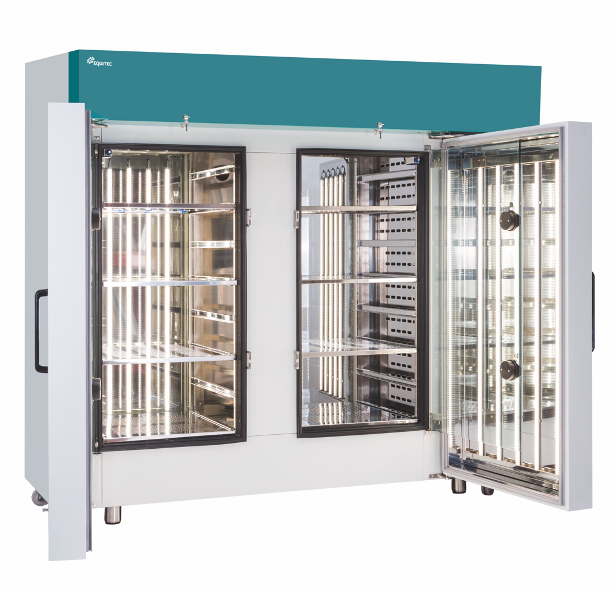
Fully tailor-made phytotrons. Large choice of volumes and shelf arrangements
Lighting by LEDs, on the top of the shelves or from the sides. Colors, spectra, light intensity according to your needs. Up to 30,000 Lux
Maintenance and remote maintenance service
High stability for ICH tests, and insects
Very wide temperature and humidity ranges: - 30°... 80°C, 20...95%RH
Reinforced components to resist the acidity generated by insects and animals: electrical heaters, fins, evaporator, interior and shelves in 316 stainless steel, tropicalized treatment of cold and electronic components
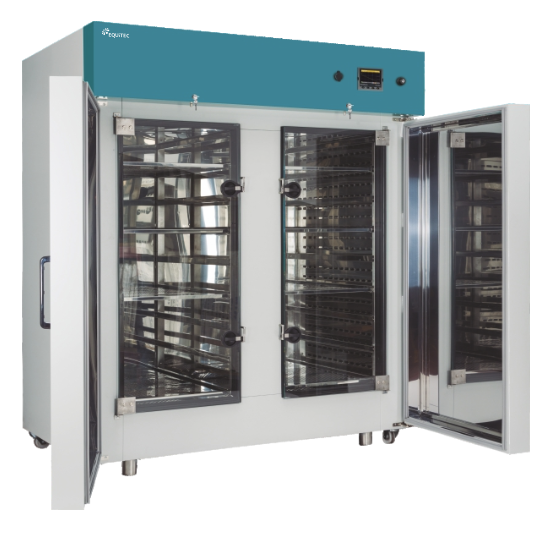
1800L ERIS. T° and RH. Stainless steel interior
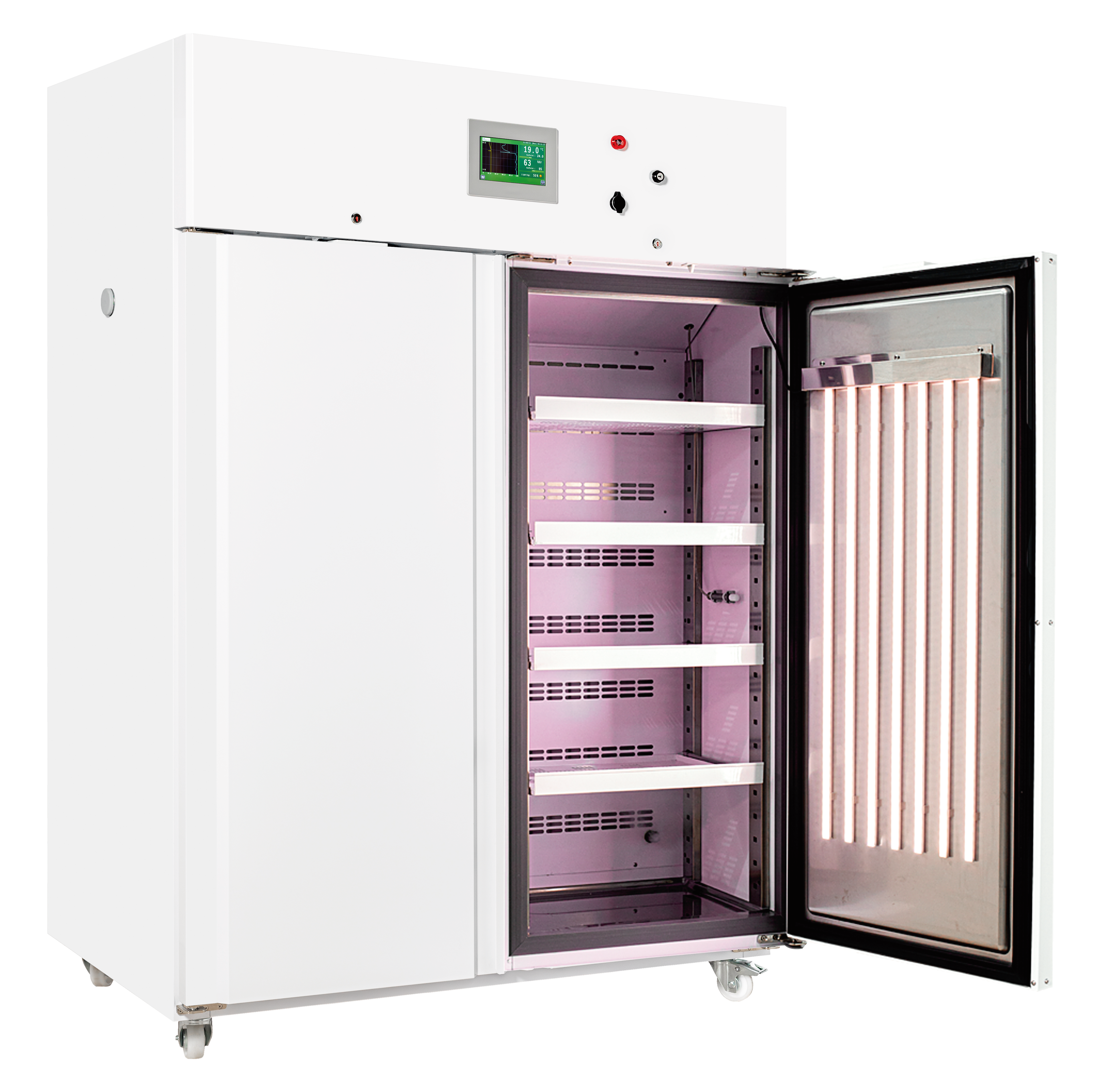
ERIS-ALG of 1500L
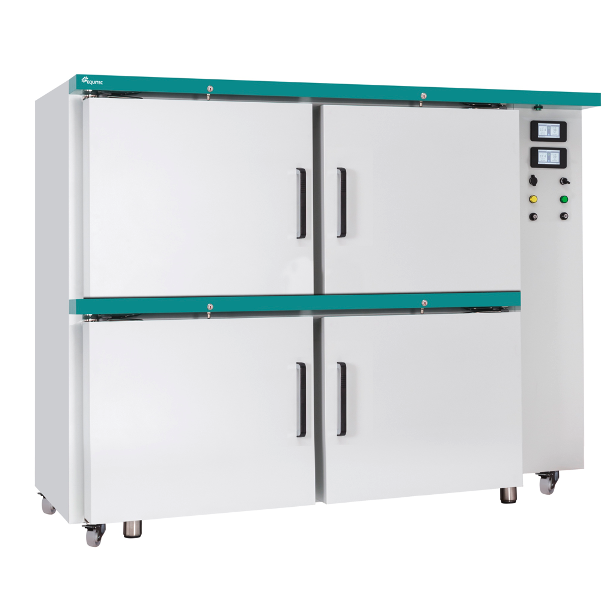
Unit of 4 independent chambers. Useful volume 4x 537L
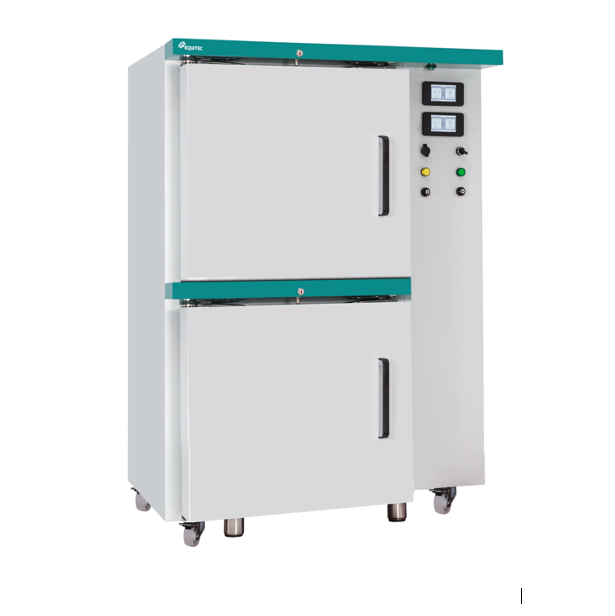
2 independant chambers of 537L
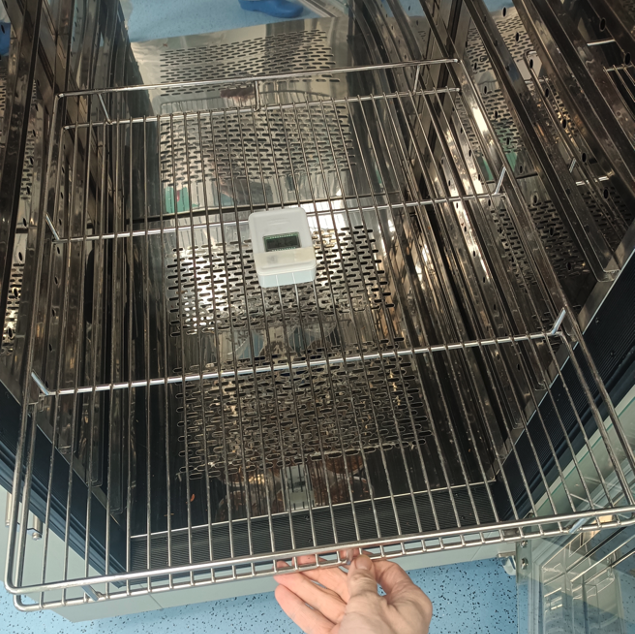
Stainless steel interior (option). Necessary for animals and insects
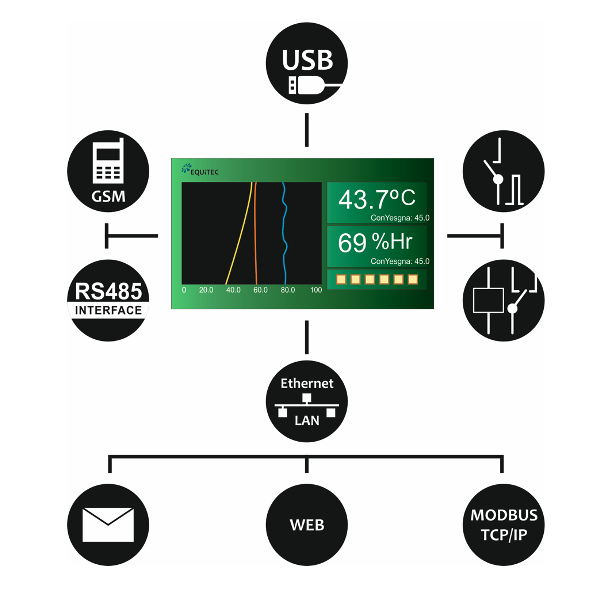
The PLC allows great external connectivity
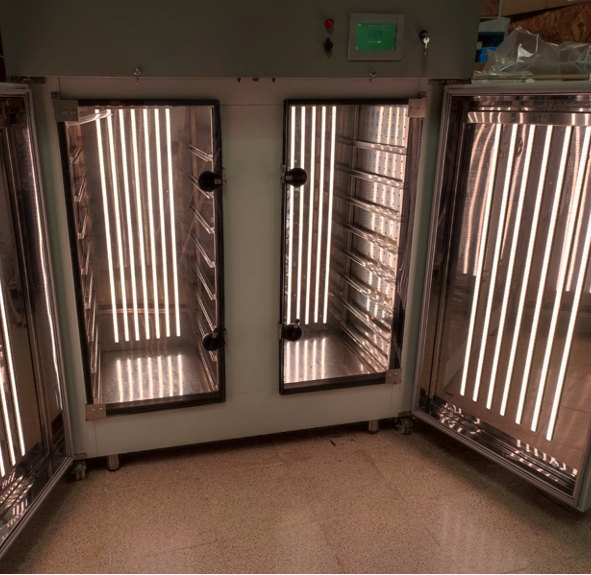
ERIS 1800L. 2-sided vertical lighting
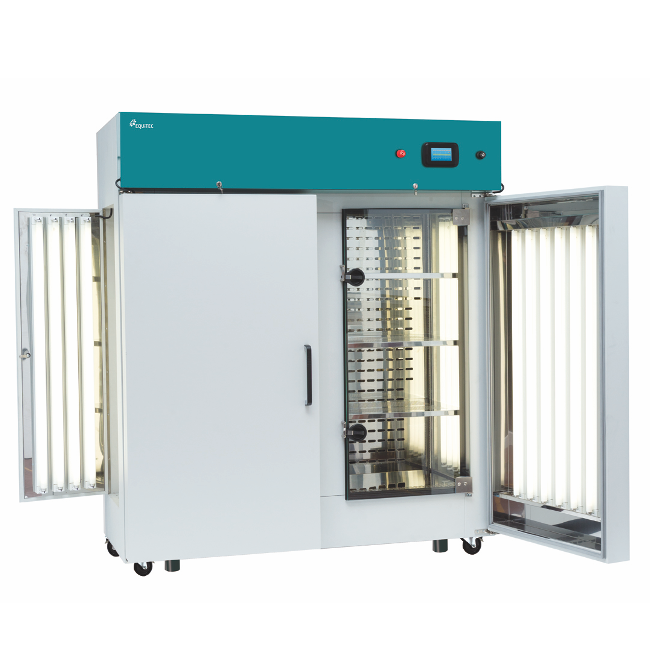
ERIS 1800L. 3-sided vertical lighting
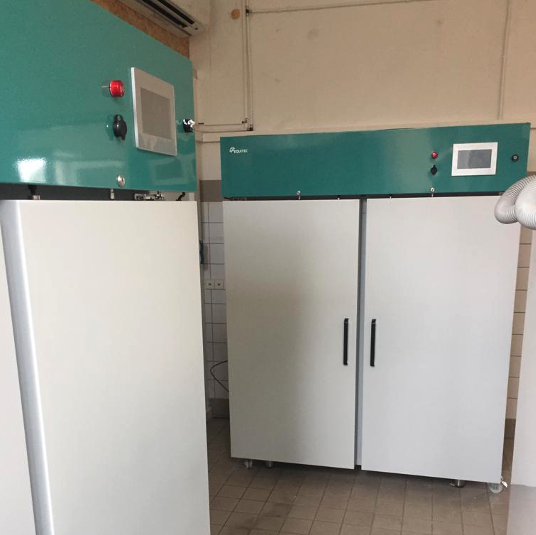
2 x 1500L chambers on site
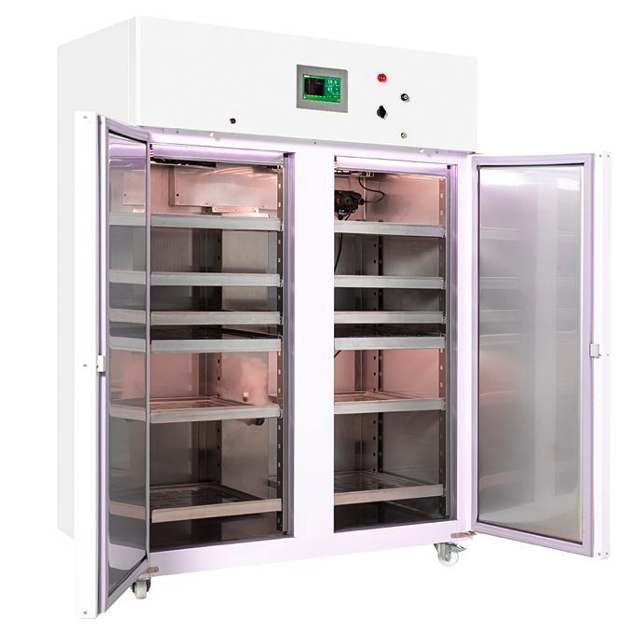
ERIS-ALG of 1395L

Special tray to support shakers with heavy loads

ERIS de 1800L . Vertical LEDs inside doors
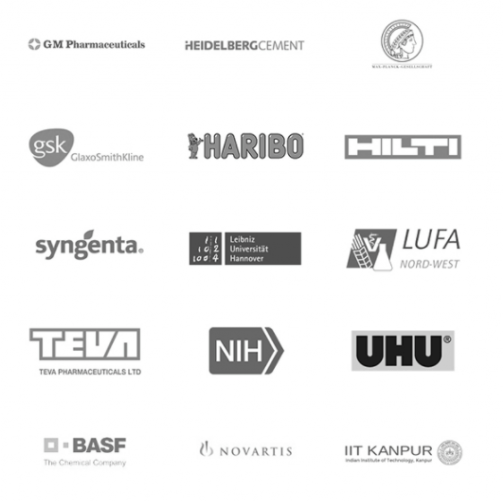
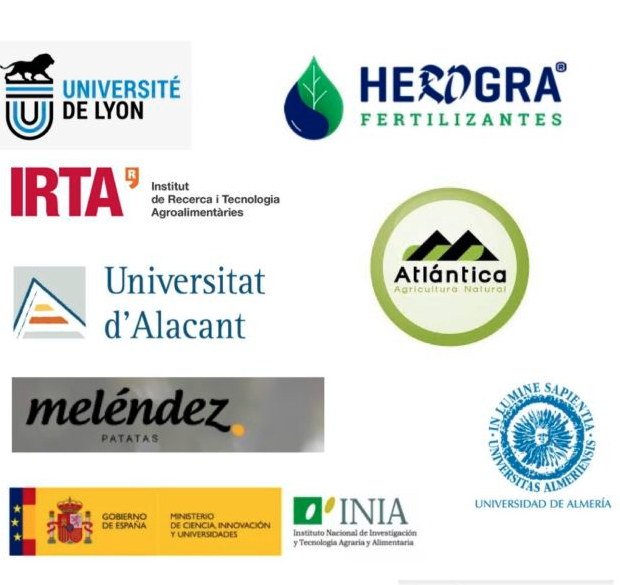
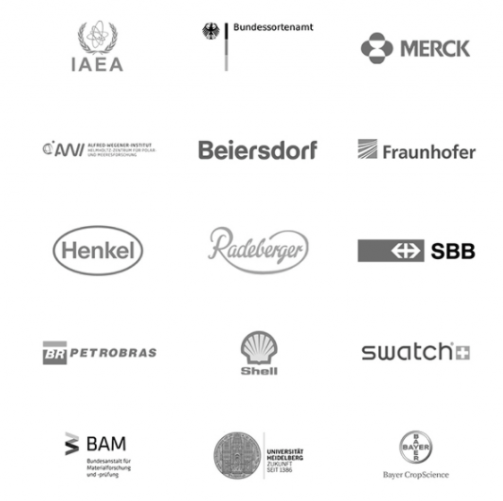
The 9 key questions to ask yourself when choosing the lighting for your samples;
What type of tests?
Do you need to replicate outdoor conditions? (a daylight spectrum is surely suitable)
Or rather promote (accelerate) a process? for example with “plant growth” spectrum with mixture of monochromatic red and blue LEDs.
Or even carry out standardized tests?
Very specialized room, or general?
If your room is allocated to only one type of plants, then we can advise you on the spectrum best suited to your needs.
On the other hand, if you need to test on a wide variety of species, then a “warm white” type spectrum will be preferable.
What type of lamps?
The question almost no longer arises to the extent that neon tubes are increasingly difficult to find as manufacturers replace them with LEDs which allow similar results to be obtained with a considerable expenditure of energy. lesser.
What intensity of lighting?
The intensity is ideally expressed in micromoles/m2/s useful for your plants. Or in Lux at a specified distance from the room. But the expression in PPFD is much more precise: see why further down in the “FAQ and Links” tab).
What spectrum?
The choice of spectrum is absolutely essential to maximize the development of your samples. Below you find several examples of choices of LED strips (and therefore spectrum) recommended by their manufacturers depending on the application
What uniformity?
This is the trick question. Ideally, any scientific approach should be based on the most homogeneous and reproducible tools possible. But having perfect uniformity has a high cost, in terms of investment because we have to add sources, then in use.
Very tight tolerances must therefore be reserved for very precise research.
Photoperiodicity?
Do you need to simulate a day/night alternation (or other)? Seasons? Do a multi-year search?
Should we fear certain pests?
The environment in which your plants will grow may contain pest larvae which can develop under the influence of temperature and light. Will these pests carry disease? Or will they slow down your process?
In this case, using a little UV may be beneficial. To be tested, because too much UV can also hinder the development of your plants.
Taking advantage of the Emerson Effect to boost growth?
The Emerson effect is the increase in the rate of photosynthesis after exposure of samples to light wavelengths of 670 nm (red light) and 700 nm (infra red).
When exposed to light of both wavelengths simultaneously, the rate of photosynthesis is much greater than the sum of the effects of red light and far-red light.
By adding our “laser diodes” it is possible to boost growth by 15 to 20%
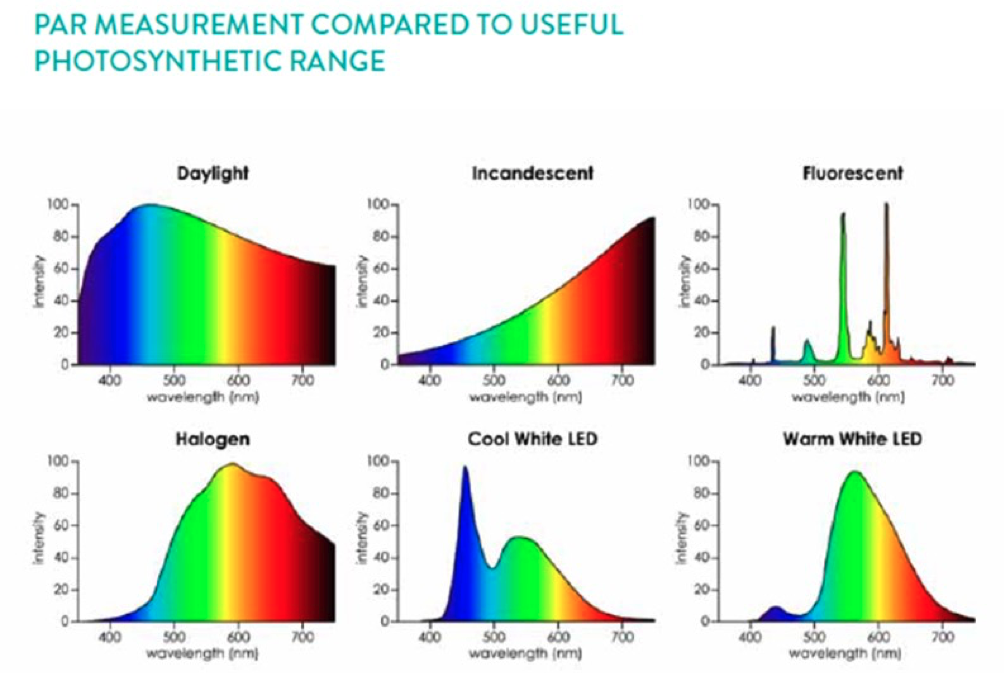
Spectra compared by source type
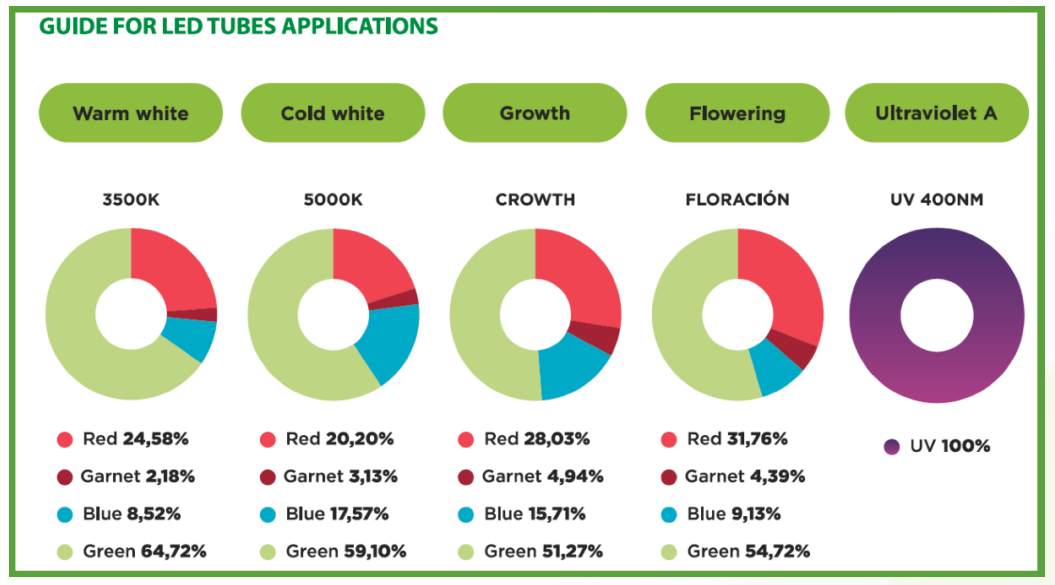
How to choose LEDs according to your application
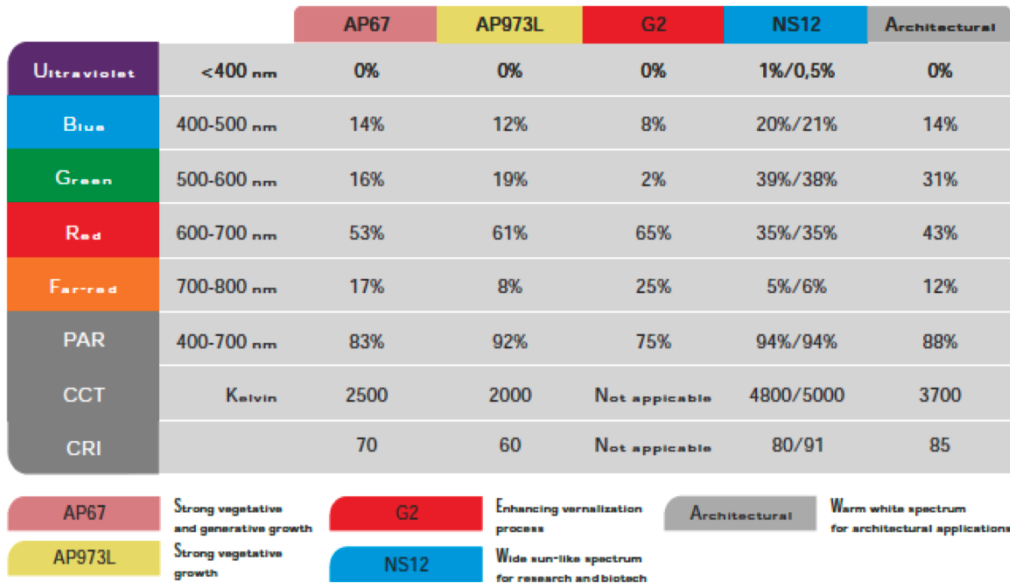
Spectra by LED type
Some useful links on light: in order to understand the different measurements.
Light intensity and distance: a simple video to understand the effect of source distance on the illumination received by your samples
The light recipe (according to Philips Lighting): Intensity, Spectrum, Uniformity, Duration are the 4 characteristics to determine for optimal illumination of your samples
PAR,PPF,PPFD,PFD: a video in English to explain the different ways of measuring the radiation useful for photosynthesis which arrives on your samples:
BY: Photosynthetically Active Radiation. Unit: W/m2. Only Watts generated in the wavelength band between 400 and 700 nm are counted.
PPF: Photosynthetic Photon Flux
PPFD: Photosynthetic Photon Flux Density. Unit: micromoles/m2/s. Only photons between 400 and 700 nanometers are counted
PFD: Photon Flux Density. Unit: micromoles/m2/s. Photons between 300 and 800 nanometers are counted, because it has been found that certain wavelengths in UV and IR promote photosynthesis.
PPFD–Lux conversion. Very useful page. Be careful, the spectrum has a lot of influence on the result obtained
LEDs and plants: in this article the Belgian VEGELED research team demonstrates after 2 years of research that LEDs can also be used in a positive way in horticulture. You will also find a correspondence between the different light sources (LEDs, Neon Tubes, Compact Fluorescent Lamps, HPI (Metal Halide Lamps), HPS (Sodium Lamps). It has been shown that the quantity of photons useful for photosynthesis (mainly in blue and red) is 770% greater per thousand lux with a mixture of monochrome LEDs.
Candela, Lux, Lumen: a page that summarizes this, with additional ideas on the order of magnitude of illuminance
Vertical Farming: Philips is actively working on this growing sector
Why are LEDs more efficient than HPS lamps? The response by Philips in pictures
The Emerson effect: the Emerson effect is the increase in the rate of photosynthesis after exposure of samples to light wavelengths of 670 nm (red light) and 700 nm (infra red).
When exposed to light of both wavelengths simultaneously, the rate of photosynthesis is much greater than the sum of the effects of red light and far-red light.
Valoya-Le Blog: this blog is a mine of information on light. By one of the most advanced LED manufacturers
Light spectra by Valoya: all important parameters and their influence on plant growth
The Technical Illumination Guide by Valoya: a particularly well-done “for dummies” guide to professional lighting.
The plant growth guide by Valoya: with this document you will have a much better understanding of the influence of light on plant growth
Some useful links on plant growth
Germination – Database by species: a wealth of information which brings together in an ABC, the germination conditions of known seeds.
ISTA Germination Tests: An academic dissertation that describes the various ISTA tests for determining seed quality. Test on paper or sand. Growth intensity, accelerated aging, “Hiltner”, “cold test” tests.
ISTA (International Seed Testing Association): Seed Quality Assurance.
ISTA rules 2021: introduction
ISTA rules 2021: certificates
ISTA rules 2021: sampling
ISTA rules 2021: seed health test
Grow lights for plants: a particularly detailed New Zealand blog article on the best lights for different types of plants.
